Lockdown Crafts
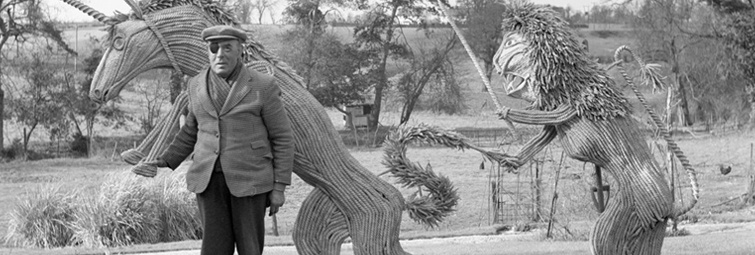
It is difficult to create a good definition for craft.
Andrew Jewell, curator at The MERL in the 1960s, said of his exhibition Countryside Crafts that ‘all the objects on display were made to be used’. Historian and author Glenn Adamson said that ‘craft is making something skilfully; it’s just that simple. But from that basic definition, infinite complexities arise’. Other definitions emphasise working with your hands, particular skills, or traditions. And yet craft often involves something heartfelt and personal too, as a way of expressing ourselves.
From its early days, The MERL has collected items associated with rural crafts. In this online exhibition, we look at just some of the crafts to be found in The MERL collection. We also explore what several craftspeople have been making over the lockdown period, and, in their own words, share what their work means to them.
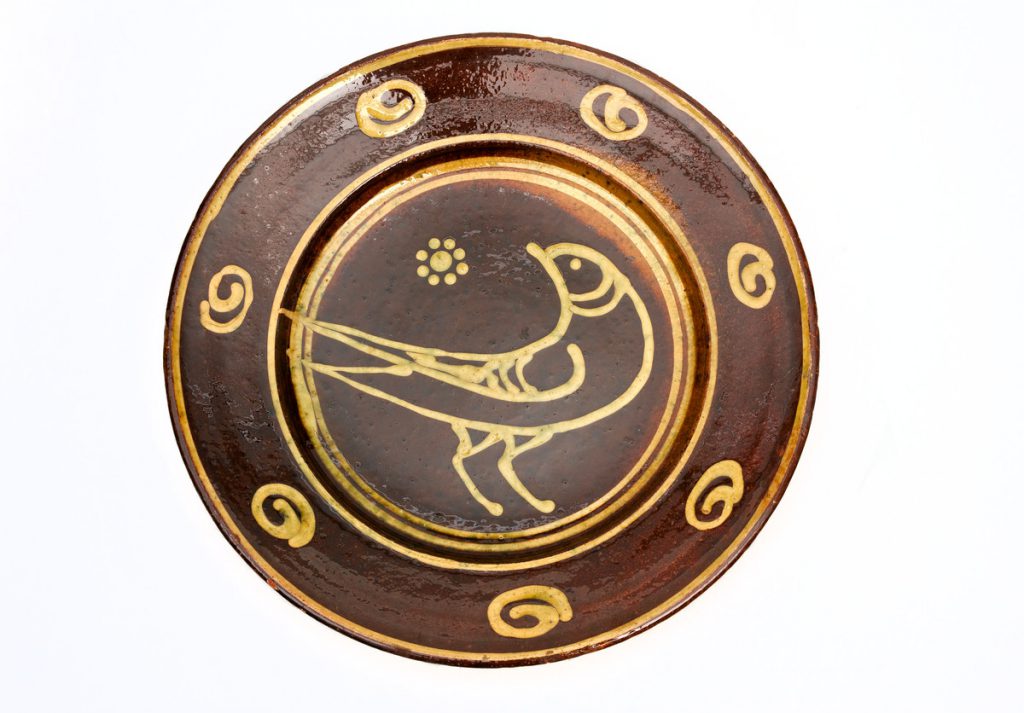
Dish by Michael Cardew
This dish was made by the renowned potter, Michael Cardew, probably during his time at Winchcombe in Gloucestershire. It is an earthenware serving dish with a bird motif which was applied using trailed slip (watered down clay squirted or trailed across the clay body to create a design). The skill in designs like this is in creating the shape and a sense of movement through a quick, simple trail.
Michael Cardew moved in 1951 to Abuja in Northern Nigeria where he established a pottery training centre with local people. The dish was originally part of a British Council Exhibition of Rural Handicrafts from Great Britain which toured Australia and New Zealand. Curator, Andrew Jewell purchased it for The MERL in 1960.
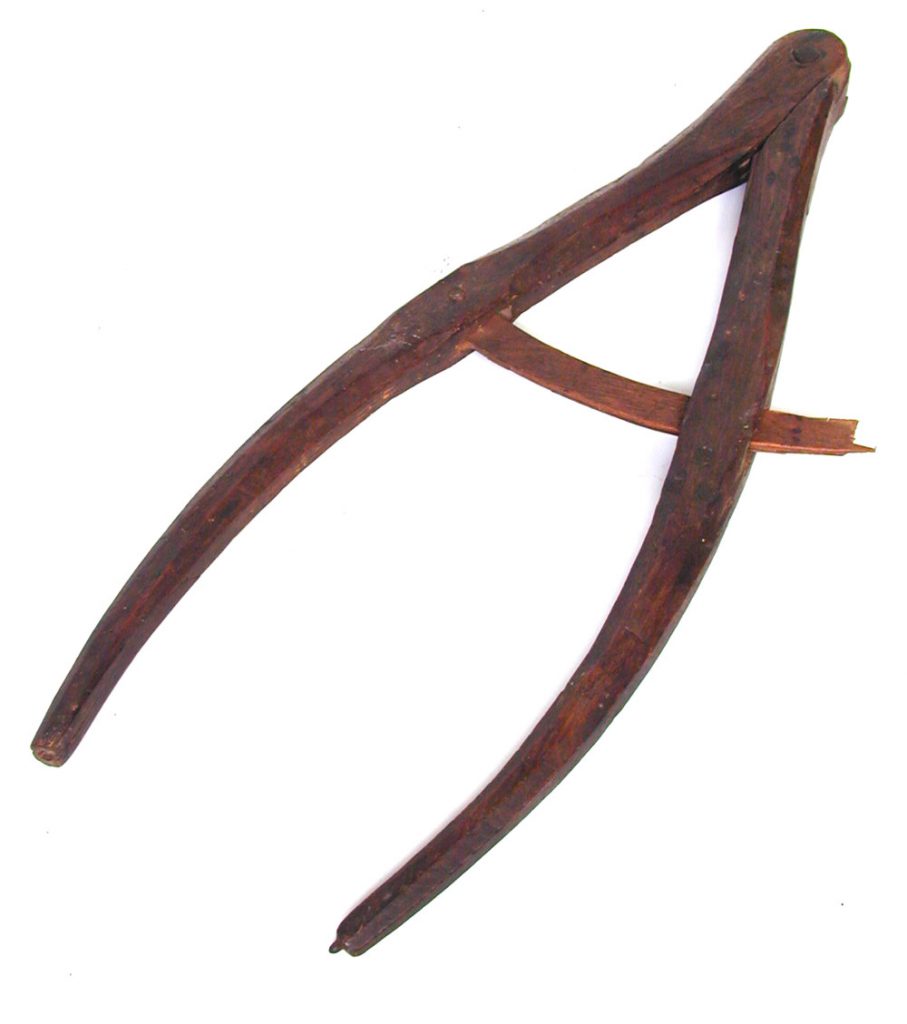
Callipers
This tool belonged to a wheelwright and was in a collection put together by Sister Lavinia Smith, an Anglican nun with an interest in rural crafts who lived in East Hendred, Oxfordshire in the 1940s.
The callipers were used to measure diameters of woodwork including sticks, boxes and bowls. The size would be measured by moving the two arms or jaws to touch the sides of the round piece of wood and the diameter would be read using the pencil marks on the curved slide which is now broken off.
Although there are standard tools for many traditional crafts, the tools themselves are often personal to individual craftspeople. It is assumed that these callipers were made, repaired and regularly used by the wheelwright himself.

Trestle
This wooden frame or trestle belonged to Mr Middleton, a wheelwright from the village of Eddington, near Hungerford, in Berkshire. It came into The MERL’s collection in 1951 and was said to have been made in the 1860s. The trestle would have been used to steady a large piece of wood as it was sawn up.
Here, it is shown being used to support a wheel as it is being assembled.
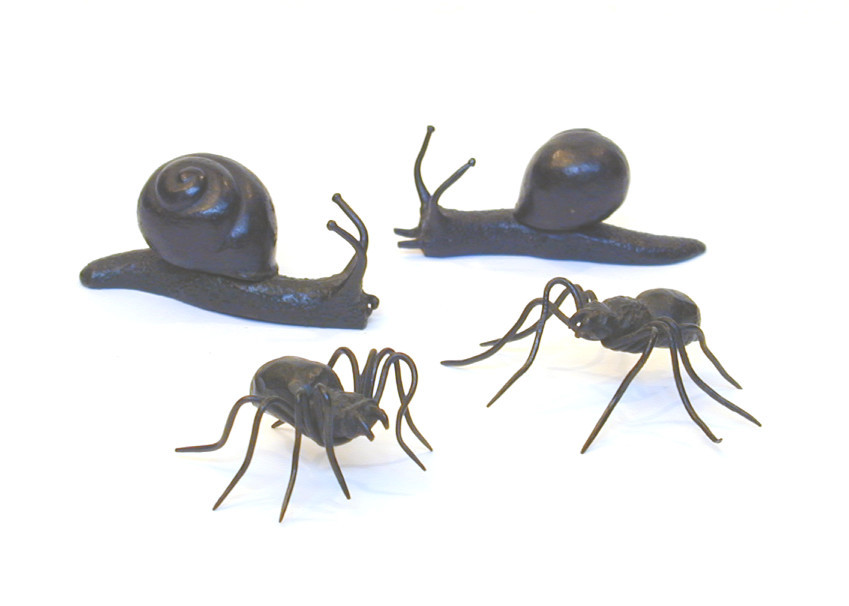
Blacksmith’s Ornaments
Often, we don’t know exactly who made the craft pieces in our collection. However, these wrought iron ornaments were made by a blacksmith by the name of Arthur Holloway. We found out more about them from his daughter-in-law, Elizabeth Holloway:
“Arthur Holloway […] lived in Bradfield. He was a blacksmith all his life. But as a sideline to shoeing horses, he used to make these wrought iron ornaments. […] I can remember going to see him during the holidays and watching him at work. It was fascinating. Once when we went on a walk he picked out a flower he wanted to copy and made it when he got back.
[…] he got most of his work direct from nature: flowers, insects and small animals. But he often used to incorporate the design into something useful like a matchbox holder, candle-holders, toasting forks or mirrors.”
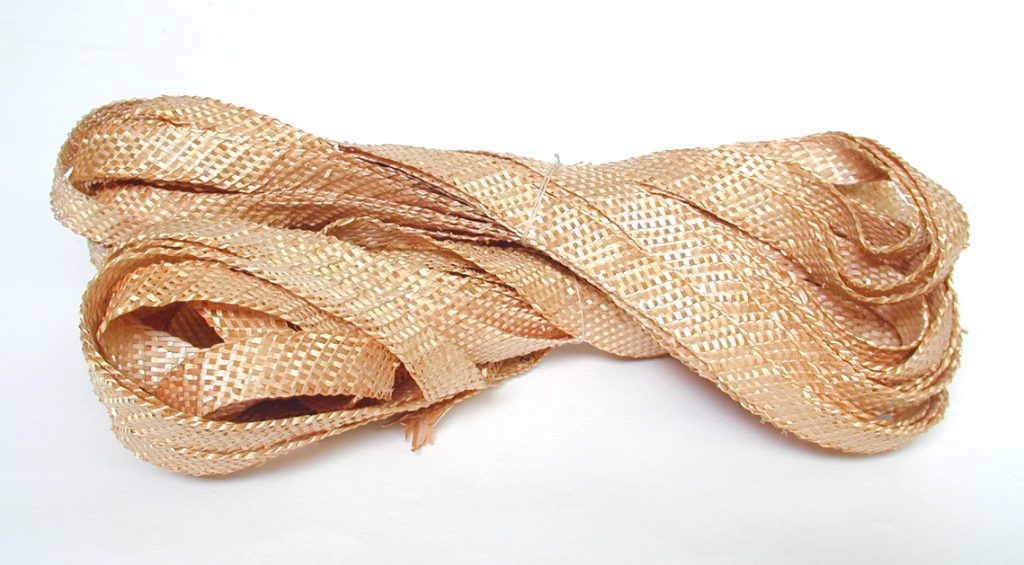
Straw Plaiting
This section of straw plaiting made in Suffolk in about 1890 was to be used for straw hats. Plaiting like this was a ‘cottage industry’ in those days. Straw left behind in fields after harvest was gathered or ‘gleaned’ and whole families would work to create this fine plaiting.
This particular plait was rejected by its prospective buyer, so was kept by the family that made it. In fact, the object is accompanied by the following story:
‘My mother, born in 1882, I believe in Clare, Suffolk, told me that as a little girl she helped in the plaiting. Apparently while the straw was available the whole family, young and old had to help. It was taken to a central point where an agent in a pony and trap bought it…The agent offered 3d a ‘score’.’
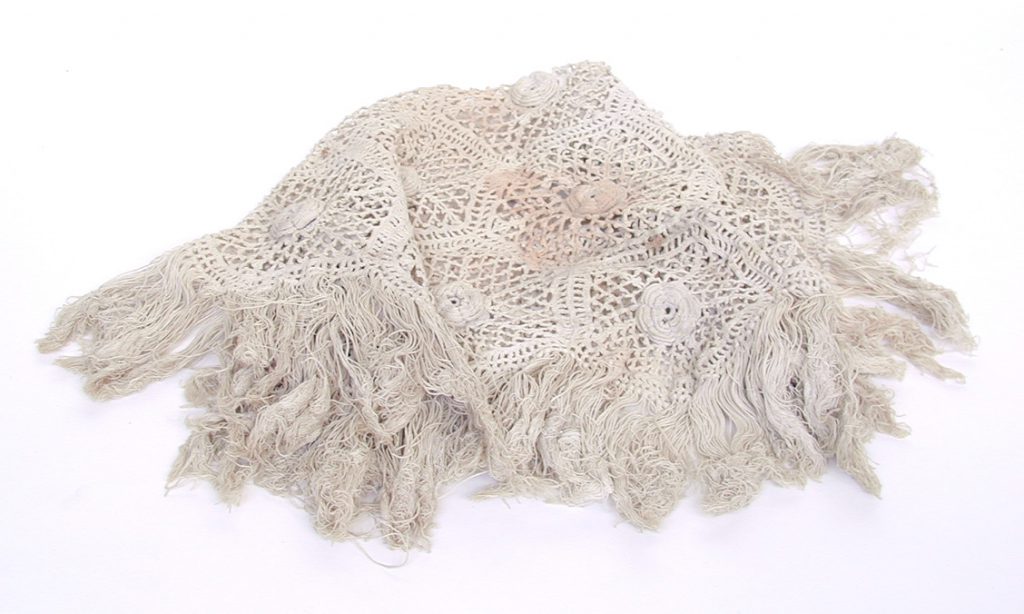
Antimacassar
This is a decorated antimacassar which would have been laid over an upholstered chair back in order to keep hair, or more importantly hair oil (macassar) from ruining the fabric of the chair. This piece was made by Miss Beasley in the 1830s. It is in the form of a square with yellow embroidery on cream linen and it is edged with tassels, all made by hand. Miss Beasley was clearly extremely skilled at her craft.

Bedcover
This is a quilted bedcover made of linen. It has floral and geometric designs worked in running stitch. It was made in the 1950s by Florence Fletcher who came from County Durham. The MERL acquired this piece as an example of a North Country quilt. It was offered in 1961 by the Rural Industries Bureau who had been promoting the quilting industry.
By the 1960s, there were very few quilters working for orders. The donor reported: ‘I fear that the really traditional quilts may soon be unobtainable because there are so few good quilters’.

Wall Hanging
This wall hanging was designed by Michael O’Connell, who made a series of larger pieces for the Festival of Britain, which is also in The MERL’s collection. The technique he used was to mark up the design on a length of rayon cloth and create the different colours though resist dyeing. We know that he worked with two sisters, Betty and Iris Sheridan, who carefully applied the designs, piped on the wax dye and helped him dye and wash the whole piece.

Field Gun Sets by Greg Rowland
Greg Rowland founded Mike Rowland and Son, Wheelwrights and Coachbuilders with his father in 1964. Both Greg and Mike are master wheelwrights, part of a small number of still working in Britain. In 2019, Greg made a copy of one of our wagon wheels as part of our Shoulder to the Wheel exhibition developed in partnership with the Crafts Study Centre. He recently lost his apprentice who left to start his own business, so has had a busy lockdown.
‘When the lockdown happened in March, we had a full workshop, and I was employing two members of staff. These were furloughed and I was left with a full order book and just myself to fulfil it, and whilst COVID hadn’t changed what I would be making, it changed how I went about it and some of my processes. I was lucky, I had just had an M.O.D. contract to make field gun sets for cadet forces and I was able to concentrate on these and fulfil the order by the easing of restrictions, and when this was complete I could continue with over fifty wheels that were waiting, leaving vehicle restorations until I could employ again.’

Ceramics by Jonathan Garratt
Jonathan Garratt is a potter based in North Dorset, who makes wood-fired pots from local clay. He expresses craft as a triangle, with the three points being hand-and-eye-coordination, memory, and imagination.
When we spoke with Jonathan earlier this year, he was unpacking his self-built wood fired kiln, which contained dozens of terracotta flowerpots.
Jonathan has spent lockdown working with clay from the garden, which intrigued him when he saw it being broken up by a farmer with a power harrow. It has proved difficult and challenging to work with, with many pots not making it through the firing.
For Jonathan, one of lockdown’s positives has been gaining more time to explore connections with the natural world, alongside there being less pressure to fulfil orders from craft outlets, and more opportunities to trade from the door, with all his work being on view outside.
Risks with new decorative ideas have paid off too, he feels!
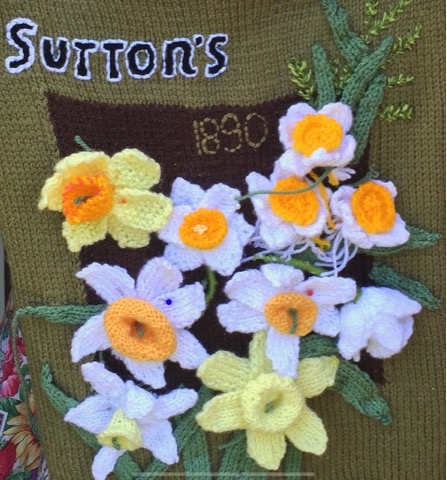
Knitting by Mewes Knitters
During lockdown, The MERL’s resident knitting group, The Mewes Knitters, continued to convene virtually. The group’s fortnightly meetings were transferred to Zoom, and some members, far from putting down their knitting needles, found themselves busier than ever.
Undertaking personal projects and setting themselves personal challenges, knitting played a significant role during their lockdown and saw them knitting things that they had not tried before. During their Zoom catch-ups, they shared stories of their accomplishments, discussed future projects, and marked important events such as birthdays all over the obligatory tea and biscuits.
During this time some members redeployed their crafting skills and diversified into making scrubs for the NHS or willow weaving. As one member said, ‘knitting was a life-saver during lockdown’.
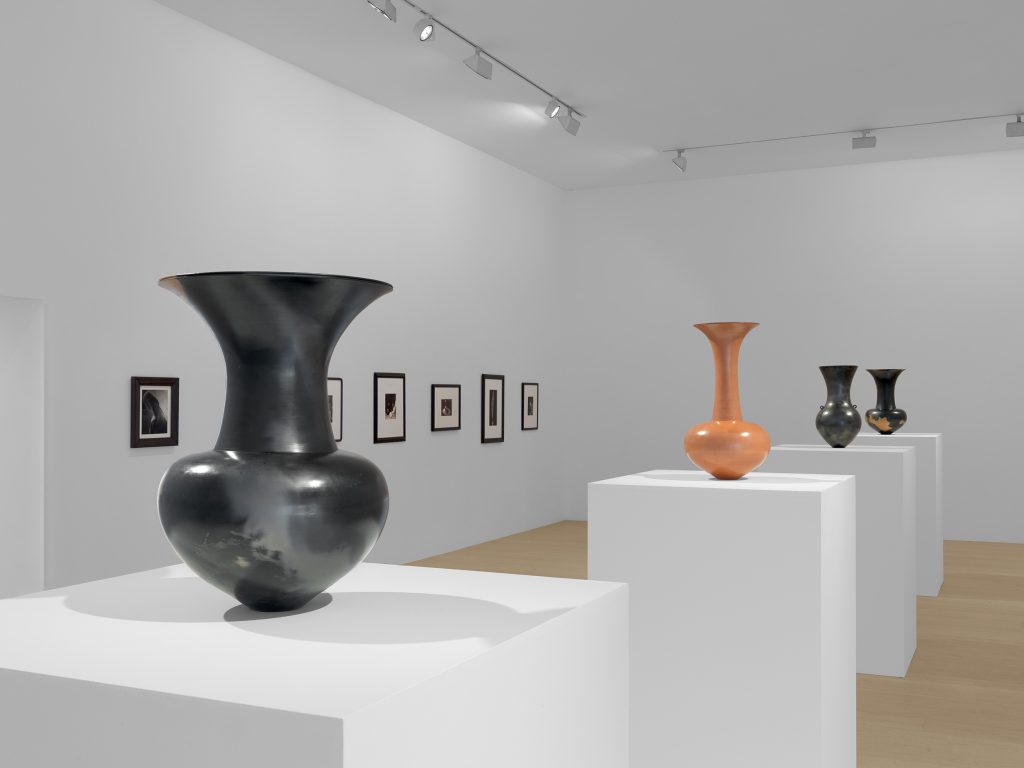
Ceramics by Magdalene Odundo
Magdalene Odundo is a Kenyan-born British studio potter. She is best known for hand-built ceramics made by the coiling method. In 1974 she spent time at the same Pottery Training Centre in Abuja, Nigeria that Michael Cardew had helped to establish.
‘I first set up a small studio in 1982 in what was a garden shed and over the years I have become accustomed to a pattern of solitary working. I was therefore surprised how the imposition of a national lockdown threw me off-balance. External assignments, lectures and overseas travel had to be cancelled. Such activities provide me with contact outside my studio. At the beginning, I became disorientated and disorganised but regained my rhythm and routine weeks into lockdown. The present exhibition Constantin Brâncusi & Magdalene Odundo, Albion Barn Gallery, Little Milton, Oxfordshire was completed during this period.’

Textiles by Alice Kettle
Alice Kettle is a textile/fibre artist who studied at the University of Reading. Her stitched works take the form of huge figurative tapestries. She is Professor of Textile Art at the Manchester School of Art.
‘The last few months, I have been drawing and stitching portraits of my family as remembered. I have also been testing ways to make textiles remotely with group and community projects. One such project is with a group of alumni to design and make two monumental textile works for Manchester Metropolitan University. We have circulated photos of our drawings and collectively designed vast printed works which I have subsequently stitched and decorated. I have also run online stitching workshops with refugees. A tricky thing to do remotely. Everything has changed, and all the work explores these challenges of doing things differently. I am not quite sure where that will take me.’
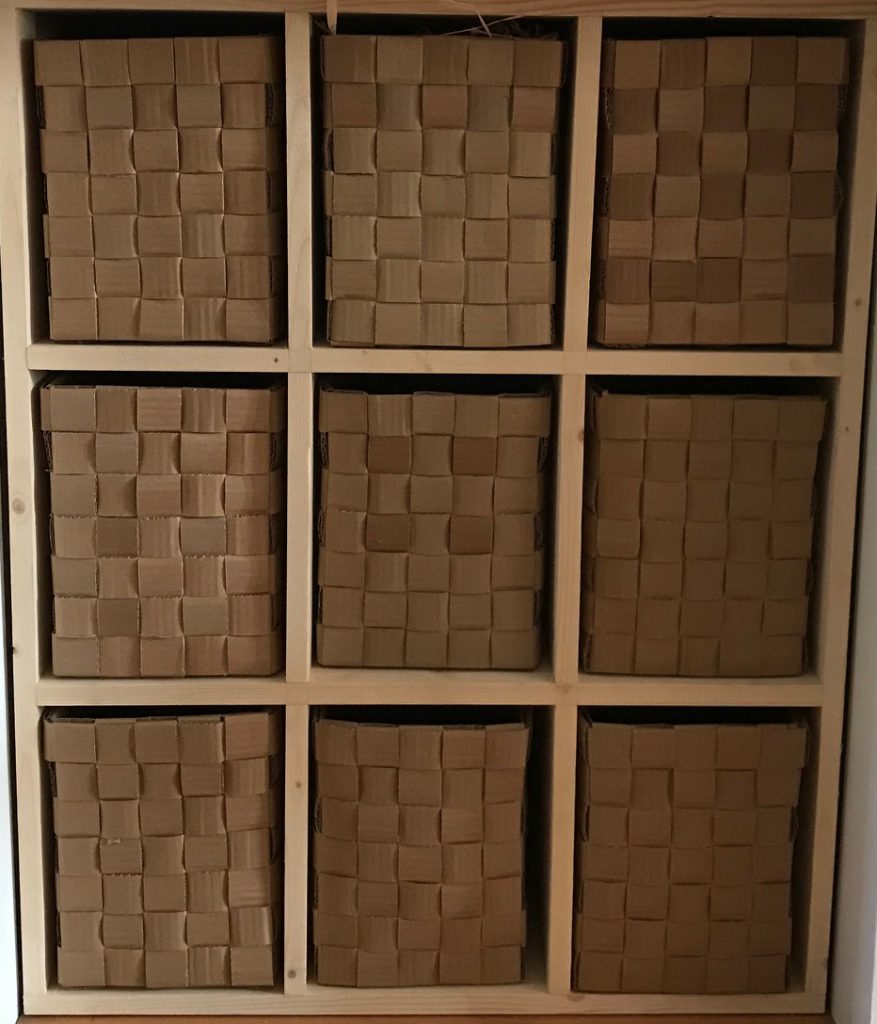
Baskets by Greta Bertram
Greta Bertram is Curator of the Crafts Study Centre in Farnham which is part of the University for the Creative Arts. She was previously a project officer for the A Sense of Place project at The MERL.
‘I’ve been obsessed with baskets for over a decade but, with the exception of a few short courses, have never really got into making, despite desperately wanting to. Last autumn I bought a book on plaited basketry techniques, traditionally used for flat materials such as rush and straw, which contained lots of ideas for making baskets using old newspaper, magazines and cardboard. Since March I’ve made a variety of baskets in corrugated cardboard, all using a simple check weave, and it’s been incredibly satisfying to see how I’ve improved, with my baskets getting tighter, straighter and squarer. I’m most pleased with this set of nine (well ten – but the first one was ultimately rejected), and the frame I made to go with them.’

Knitting by Angela Brown
‘Both crafting and knitting have been a part of my life since I was about six-years-old’, Angela told us. Angela is Visitor Services Supervisor at The MERL, as well as a fantastic crafter and maker. ‘It’s my relaxation’, she continued. ‘I always have knitting by my armchair’.
‘As a typical Gemini, I’ve always had so much that I wanted to do. I flit from one thing to another. So when lockdown happened and I was furloughed, I was almost panicking about the sheer number of things that I could do!’
‘I’d already started knitting for The MERL shop, which is when my tea cosy and mittens started. I saw an opportunity to add to the existing stuff already in the shop, made by Jan, Sharon, and Julie, the Mewes Knitters. It gave me a golden opportunity to do all these things that I just didn’t have time for before’.